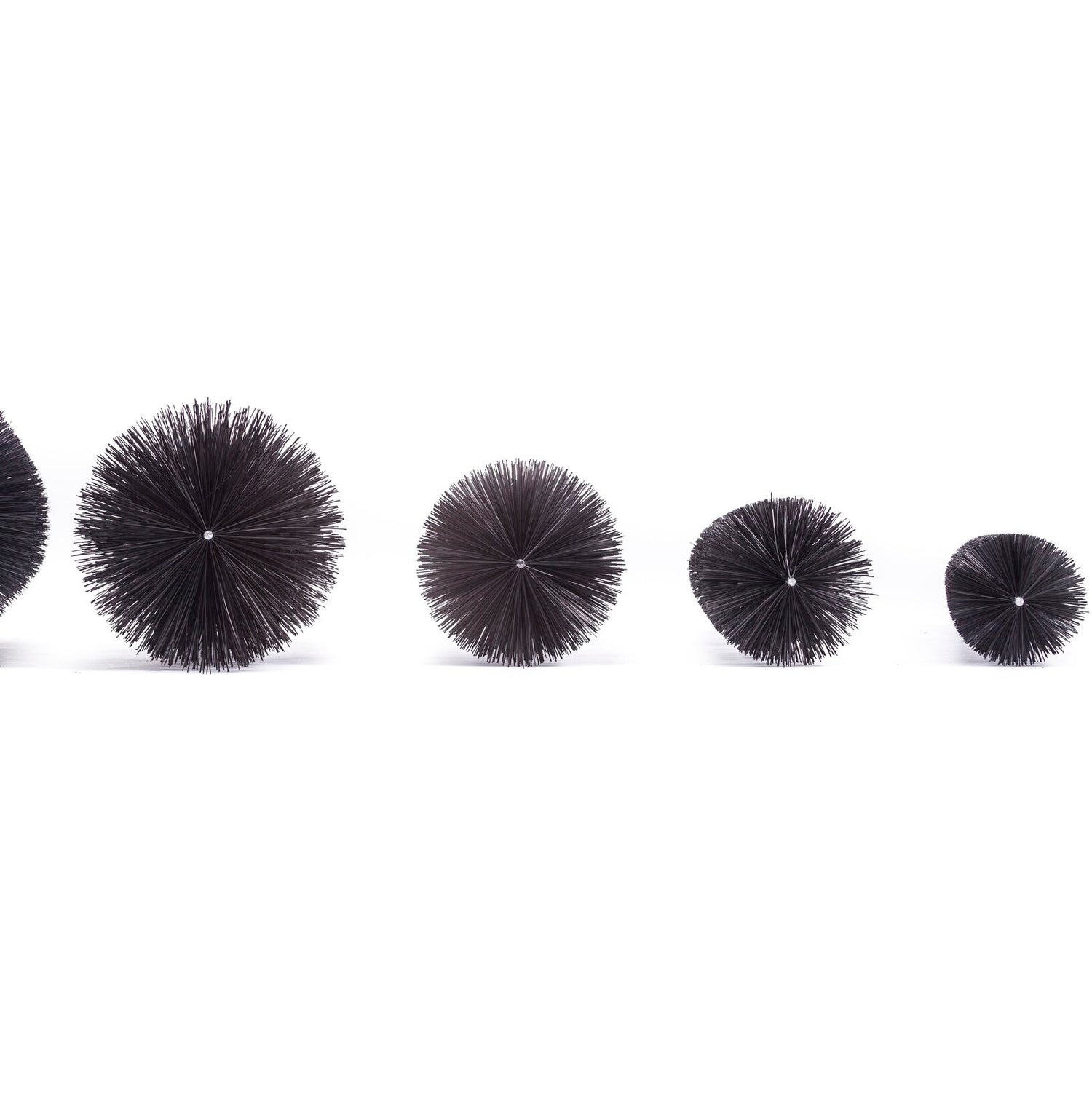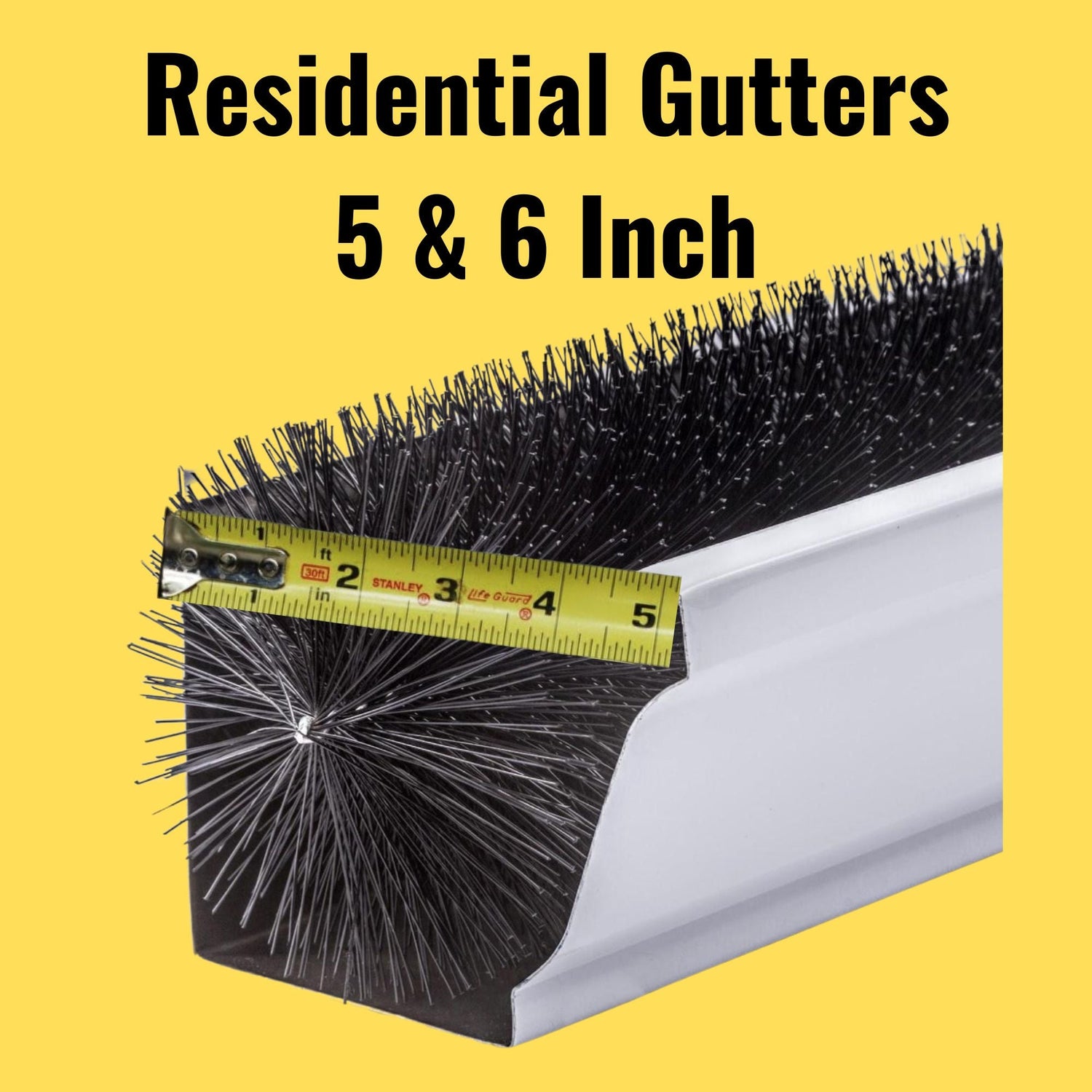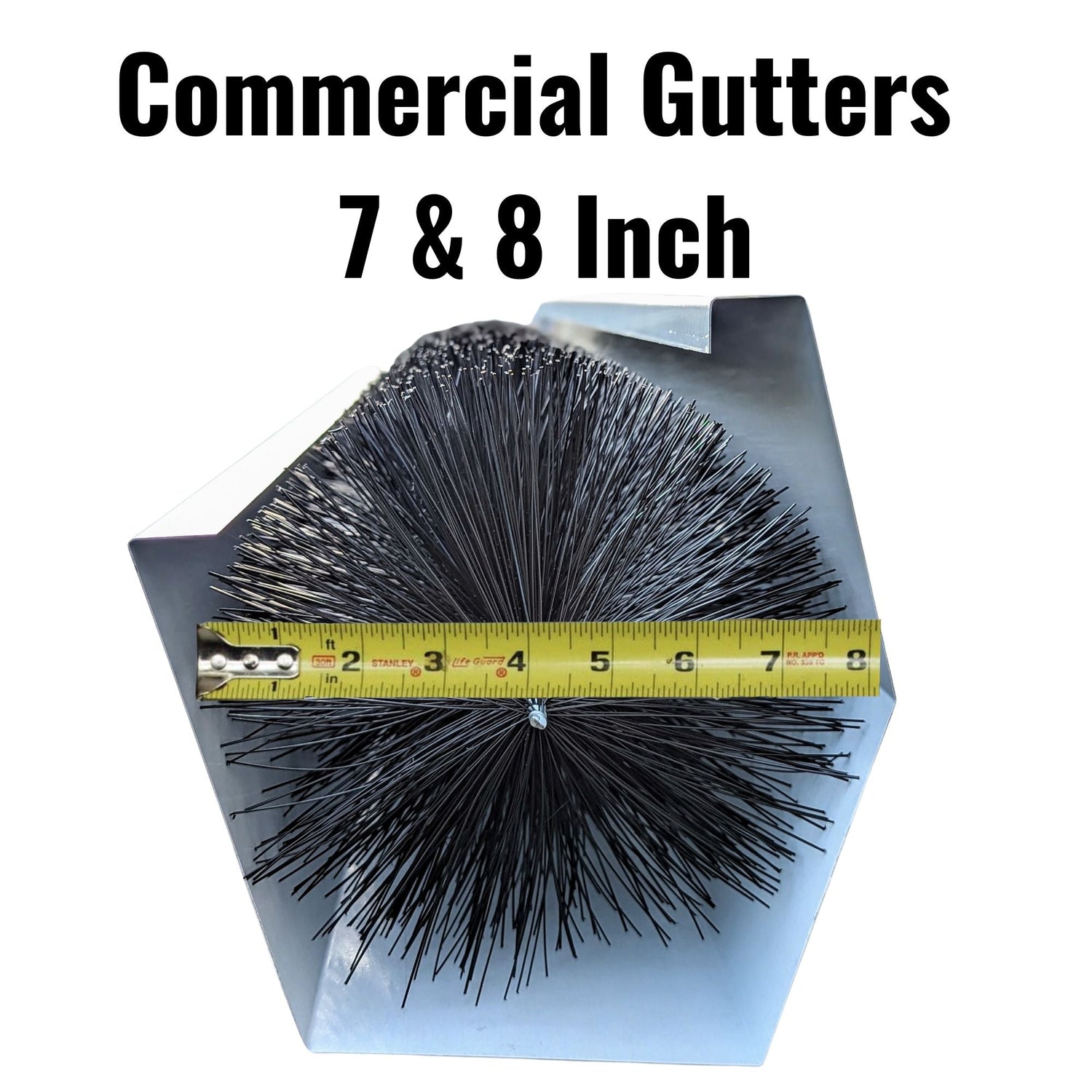Gutter Micro-mesh, used as gutter guards or gutter protection devices, seem to be the rage these days. When I was younger in the construction business, the gutter helmet style gutter protection devices were, at that time, the newest big thing until people learned of the cost and the performance or rather I should say the lack thereof. After spending over 25 years performing exterior construction, I ended up realizing that attempting to eliminate gutter maintenance is a losing proposition that forces people into spending too much money resulting in complicated gutter encumbrances and tremendous customer disappointment and remorse. My experience is in the north east USA where we have both hot summers and very cold and icy winters. Back then, people tried to eliminate gutter maintenance by installing the newest gutter guard gadget which was a helmet gutter cover with a slot in the front. At that time, customer disappointment came from the fact that wherever the rain travels, it brings debris with it. Those helmet style gutter covers have a slot opening for the water to enter, and leaves are thin enough to enter that slot so those devices do clog even though the claim was to never have to clean your gutters again. The claim was true in some ways because due to the fact that the gutter was covered by a fastened sheet metal cover, you couldn't clean your gutters even when it clogged, because you couldn't access the gutter. Imagine how disappointed people were when they realized they had spent thousands of dollars on a leaf guard, only to learn that the gutter cover device needed to be removed by a professional for maintenance. Others were devastated one brutal winter in about 2014 where they learned that these expensive metal gutter guard devices had a propensity to cause ice jams and ice backup leakage in the winter and also created dry gutter shelter for hornets and bees in the summer. However, overwhelmingly the biggest disappointment was the fact that the fast rain water would hit these leaf guard devices like a ramp, and overshoot past the gutter entirely, even when clean. Disappointment is far more severe when you have spent a lot of money. Decreasing the slope at the lower end of the roof is a bad idea; it breaks all of the traditional rules of roofing and flashing, which is why our father’s fathers never offered such a product.

Many have learned their lesson with those expensive helmet type gutter guard devices. Attempting to reach “maintenance free” was too much of an attempt at perfection and often became more trouble than it was worth. Today, the rage is the gutter micro mesh or gutter microscreen. I used to clean gutters for customers. Some of my customers had open gutter screens or rather screens with large openings, however they still needed me to clean their gutters regularly. The open screens accept the water fairly well because the openings in the gutter screens are somewhat large, however wherever the water travels, also the debris travels. When I came to clean a customers gutters, if they had a gutter screen, the gutter cleaning job was far more expensive because I had to remove the screen in order to clean the gutter, but then I had to pick the millions of items out of the screen itself. Those pesky tree droppings would lodge in the screen so that i had to pick them out one by one.

Therefore, what normally would be a 20 minute gutter cleaning turned into removal of the screen, cleaning of the gutters, cleaning of the screen and then proper fastening of the screen. The job took three times as long; I didn't mind doing the work but I hated charging the customer for what I considered to be an extremely poor value. I remembered feeling that if they need the gutters cleaned anyway, just forget the screen and get a faster simpler system that would be a much better value.
So lately the newest trend, is the gutter microscreen. The concept here is that the openings or apertures in the screen are so small, that debris can not fit through the opening therefore no debris will enter the gutter. These gutter micro mesh leaf guards are fastened to the top of the gutter with the concept being that the rain water will flow through the screen while the microscreen will act as a leaf filter to keep the debris out. The allure seems to be the fact that the gutter micromesh, similar to the screen on an electric razor, is made of high-tech stainless steel so they are a “very cool” and new. The fact that it is new and modern, luls homeowners into the concept. By making the gutter micro mesh out of stainless steel, salespeople can explain that it is impervious to algae, growth and other organisms. While it is true that green algae, moss and organisms will not grow or attach to stainless steel screen itself, wherever the rain water flows, it brings dirt, pollution and contaminants with it. Stainless steel is fairly impervious, however everything outdoors gets dirty. Just put something outdoors and allow water to flow through it for a while, you will see that everything outdoors gets dirty. So with the gutter microscreens, as the water flows through the apertures, the openings get dirty and the organisms and algae grows on the dirt. Eventually, the openings become closures and the fast water doesn't have the time to filter through the screen. Leaves, dirt and debris lay on the screens, get wet, and stick, causing the water to overshoot the entire gutter.

I know I would be very disappointed if I had spent a lot of money on a high tech leaf guard device that was rendering my gutter useless, and the writing is on the wall that when someone would call to complain, the response might be “ there is nothing inside the gutter so the claim is true that you never have to clean your gutter again”. Sure, I do not have to clean my gutter, but I constantly have to clean off the screen or else it is like having a solid sheet metal cover over the gutter. Additionally, I read a review recently from a customer who purchased a metal screen from a big box store. The customer explained the problem he was having with water not entering the gutter. He put up his ladder and viewed what was happening as the exterior winter temperature was dropping below freezing. He explained that the openings of the screen were clean and accepting water fine, however the fact that the temperature dropped below freezing, caused a “first to freeze zone” right at the gutter screen. He literally could see the screen opening beginning to shrink as the ice built up on the coldest spots which were of course the screen over the gutter. The home and roof had retained warmth, however the gutter and the gutter screen were completely exterior with lots of surrounding air flow , therefore those items reached the freezing point first. He literally watched as his gutter screen froze over creating a solid sheet of ice covering the gutter causing the water to by-pass. In his negative review, he went on to explain that the roof was not yet iced, the gutter under the gutter screen was wide open, free of debris and free flowing but the water couldn't enter the gutter because the screen openings no longer existed.
Below is a picture I personally took, during a very difficult winter in Rhode Island. When a gutter has a small ice problem, if the conditions persist, the ice level grows higher day by day and melting that occurs from the interior building’s heat loss, creates a pool that backs up and leaks into the building. As the picture shows, you really should not install any metal device that intersects with the roof and has a lower slope than the roof itself thereby slowing or stopping water and ice.

It is a known fact that metal is a temperature conductor and that all metal items create a “thermal bridge”. In construction over the last 30 or 40 years, certain specialty construction fasteners have been upgraded from metal to plastic so that they will no longer conduct temperature and also so that they will not lose as much heat from the interior of the building. One particular exterior fastener made of plastic, even adopted the name NTB fastener, which stands for non-thermal bridge fastener, illustrating the improvement by changing from a metal fastener to a plastic fastener. I explain all of this to illustrate the obvious reasons that metal screens and covers cause ice problems in certain climates. A non thermal bridging material such as plastic would not cause such problems because plastic does not conduct in the same manner as metal. Perhaps that’s the reason the below photo depicts a gutter cover customer putting the gutter guard out in the trash. The contractor replying to the problem probably explained that there was nothing he or she could do to rectify the problem as long as the gutter covers were fastened and in the way. You can see in the picture how the shingles remained cleaner where the gutter cover had been installed. I hope the contractor remembered to seal the roof nail holes resulting where the cover was removed.

Products come and go, however when you are trying to keep water flowing through a very thin channel or trough in a dirty leaf-ridden environment, you are going to have to provide maintenance. In an attempt to entirely eliminate maintenance, people become prey for the newest gadget with a modern twist. These gutter guardsystems are often complicated and secured by fasteners so instead of entirely eliminating maintenance, they simply serve to cause problems and make gutter maintenance more difficult and expensive. Disappointment becomes even more severe when the customer has overpaid. The reason these newfangled gutter leaf guard systems are proliferating and are so expensive in the first place is the fact that they are labor intensive and complicated to install combined with the fact that they have to mark the price up substantially in order to pay for the cost of the sales force and the expense of marketing.
As someone who has spent over 25 years working on roofs and gutters, I learned that there will always be maintenance required so it makes sense to keep the cost of gutter protection low because you do not want to blow the entire budget leaving no money for maintenance. It also makes sense to keep the system simple so that it can be quickly and easily maintained by just about anybody without the need for tools. Most important, it makes sense to choose a system that does not touch the roof and does not conduct thermally like metal so that you will not be causing yourself roof or ice problems. The GutterBrush leaf guard system is inexpensive, simple to install, easy to maintain, does not touch the roof, and it consists of plastic non-thermal-bridging bristles that do not become the “first to freeze” zone. Most importantly, GutterBrush leaf guard is a simple concept that any homeowner can understand. At some point, gutter maintenance will become necessary and regardless of what style of gutter protection you have, you may call a contractor with a problem. So commonly, the contractor will take a look at the problem and knowingly or unknowingly, the contractor may explain that the gutter protection device is the problem; this happens all the time, and the contractor has the chance to sell a new device. Homeowners often bounce from one gutter guard protection device to another spending thousands based on the recommendation of the contractor; mainly because the gutter protection system is complicated and expensive to maintain. With the GutterBrush gutter guard, homeowners are in the driver’s seat because the leaf guard system is so simple, they understand they can simply explain to the contractor that the GutterBrush is not the problem, it simply needs some maintenance and such is very easy so please pull out the brushes, bang the debris out, clean the gutter and put the brushes back in renewed … It’s Simple!
By Alex O’Hanley





